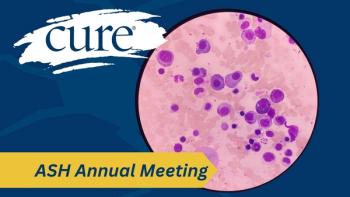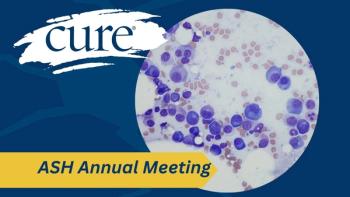
Fear, Doctors and Diagnosis
When faced with a cancer diagnosis, it's like being lost in a maze without a map where everyone speaks a language you don't understand and expects questions you don't know to ask.
When faced with a cancer diagnosis, it’s like being lost in a maze without a map where everyone speaks words you don’t understand and expects questions you don’t know to ask.
I had forgotten how exhausting it is to get a diagnosis: The fear of the unknown combined with a new language and dealing with people who may or may not be helpful — and filling in exactly the same paperwork for every professional you visit. But, I have to admit I think I had it easier when I was diagnosed with breast cancer in 1986 than cancer patients today. There weren’t as many doctors or choices or offices. Things just weren’t as complicated.
Today, cancer patients learn from someone, whether it is a physician or not, that they need to have something “looked into.” If it’s cancer, patients enter the abyss of surgeons, oncologists, radiation oncologists and perhaps nutritionists, physical therapists, all of whom have gatekeepers you have to deal with.
The search for diagnosis and treatment was brought back to me in a very real way in the past few months when my feet decided to go berserk.
I have peripheral neuropathy. It is most probably idiopathic, meaning not related to my cancer treatment because they have not connected neuropathy to any of the drugs I was given. I am almost convinced there is no connection, keeping in mind that there are still many things coming to light as we, cancer survivors, live longer.
My neuropathy began in 1999 and stayed with me in a manageable state with pain medication, the right shoes and care in walking distances — until May, 2014 when I looked down at two lumps that were not the feet I had come to know and love. Instead they were swollen – the feet, just the feet – it stopped just below the ankle and when I went to my primary care physician, she said, “I have never seen anything like that.” She sent me to a rheumatologist No. 1.
Unfortunately, he misdiagnosed me as having arthritis. On my third visit, I asked why my feet had not improved and pointed out some funky knots that had appeared. For the first time he looked at my feet and said, “Well, we should get an MRI.”
“Ya think?”
While dealing with setting up the MRI, the insurance company called and asked me to go to another office where the MRI was cheaper. While researching them I also found rheumatologist No. 2. He was amazing and diagnosed my foot problem in 10 minutes as Charcot Arthropathy, which, in short, is when the bones in the foot (and maybe other joints) get inflamed for some unknown reason and begin fracturing. It results in a deformed foot. When I saw the X-rays, I started crying and became really scared.
Remember that feeling in your cancer diagnosis? A fear so planted in your gut you don’t think it will ever be dislodged.
No. 2 didn’t want to talk more until I had seen an orthopedic surgeon. So orthopedic surgeon No. 1 enters the picture. Rheumatologist No. 2 also said I needed to see him ASAP, which meant to me within a few days.
I called the office of orthopedic No. 1 and was met by a very fast-talking apointment person who prompted me to say, “STOP talking for a minute. I am scared. I don’t know what the terms mean that you are using, and when I ask you to explain you get frustrated. Will you begin again?” She did, but within minutes was back to her old style.
Sound familiar? With cancer we have to learn a new language in a matter of days. I can’t count the number of times I said, “And what does that mean” during my diagnosis for cancer. The first time was when my obstetrician, who looked at the lump during my annual exam a year after my daughter was born.. She called me and said my mammogram had come back “highly suspicious.”
“What does that mean,” I said.
“It means you probably have breast cancer.”
Now, trying to see orthopedic No. 1, I was trying to follow what the receptionist was saying, which came down to needing the records from the two doctors I had already seen. OK. I spent the next day talking to answering machines in the doctors' offices. At the end of the day, I called the receptinist to ask if they had received my records. No, she said, but they were having trouble with the fax machine
“Did it occur to you to call me since you knew I was trying to get in to see him this week?” I asked.
She ignored me but said, "and you know we need the X-rays and MRI on a CD."
No. I didn't. How was I supposed to know.
I decided to go to the MRI location and rheumatologist No. 1 to pick up all my records.
Remember, my feet are deformed now and from what my research has told me, I shouldn’t be walking on them unless I have to.
Fear, incompetence and pain don’t make good bedfellows and, suddenly, I realized that I was doing the cancer dance again. Different disease, same dance.
The knowledge I have gained from researching cancer kicked in, and I got organized. I took a friend with me to see orthopedic No. 1 to take notes.
What I learned from orthopedic surgeon No. 1 was that the treatment of this condition was controversial and that the bones in my feet could stay the same for six weeks, six months, six years or forever, but he wanted to do surgery right away. The surgery meant pins and plates to keep my bones from moving any more — but it might not work. Oh, and I couldn’t put any weight on the foot for three months, which would be followed by rehab for six to nine months.
This was sounding more like cancer every day, in other words, we don’t know the best direction but here are some options and what I recommend is . . .
When I brought up that I needed to work, he acted like he didn’t hear me.
He gave me a prescription for an orthotic that would fit in my shoe. I called the orthotic place as soon as I got home, knowing that keeping my feet supported was wise. The receptionist said they didn't take insurance for the $350 for each foot, so I spent the rest of the day calling other orthotic places to see if any of them took insurance. None did. I called the first place and made an appointment.
At the same time, I was researching orthopedic surgeons for a second opinion. I hadn’t yet determined that the lack of an ability to get records from one doctor to another was a systemic problem, so I didn’t think to ask for copies at orthpedic No. 1. I learned that the former head of a national orthopedic organization was at a hospital across town. So, I called to make an appointment — and they said, of course, we need your records. This time, I called each doctors’ office and asked them to prepare my records and put my X-rays on a CD and I would be by to pick them up – again on the feet that are not supposed to be walking.
While waiting to see orthopedic surgeon No. 2, I went to the orthotic appointment and found a great professional who filled me in on the condition and said, for the first time, that I could no longer wear normal shoes. I would be in athletic shoes the rest of my life. She also said she was not going to put in the order until I saw the second surgeon because she wanted to be sure he was going to recommend the same thing. I didn’t hear her because I was stuck back on the athletic shoes for the rest of my life.
Do they not understand that those comments made off handedly are devastating to us.
The comment “no more shoes” took me to a mental picture of my closet and the thousands of dollars I invested in shoes I could wear because of my neuropathy.
Little tidbits like no more shoes, no more hair, no more breast. Doctors forget that little details like that are very painful. When I asked the rheumatologist No. 2 what I would do about shoes, his response was, “That’s the least of your worries.” And he was the good one.
So, now I am going to see orthopedic surgeon No. 2. First I am visited by his fellow, the baby docs who spend their last year with a professional learning all from him or her that they can. When the doctor entered the room he sat at the end of the exam table and took my feet in his hands. Gently he was feeling them, and then he said, “Tell me why you are here.” I responded that I had been told I have Charcot foot and I want to confirm it and need to know what treatment you recommend and how to live with this for the rest of my life.“
“Good questions,” he said. I loved him. He finally looked at ME.
And by then I had all my records in a three-ring binder. I handed it to him. He was appreciative. He then told me he did not recommend surgery but would put me in an orthotic boot that would give me more support.
Then he did something I have never seen before. He turned to his fellow, who had stood silently behind him during the exam, and asked him what he thought and why. He was teaching! It was great.
It was then that I remembered why I chose my oncologist and what I loved about him. He treated me like a human who had a little problem and NOT a disease who happened to have a human attached like an apendage.
If you are doing the diagnosis dance, get organized. Ask for your records, and don’t feel you have to use the first doctor you see. Listen to your gut about what you are being told and know that you have the right to keep seeing doctors until you feel you understand what is happening in your body. Take someone with you to take notes.
At the end of teaching his fellow, orthopedic No.2 told the fellow to get the name of my friend. "If a patient brings someone with her, it's another set of ears for the future," he told him. "If the patient doesn't' remember something you can ask her to talk to her friend, husband or whoever came with her what their memory was." Wow. The fellow turned to my friend and said, "and what is your name."
You have a right to be treated like a human being while being diagnosed. You are not a disease, you are a person and it's important that the person you partner with in your healthcare is someone who cares about you.
Tell me about your diagnosis. Let's share what we know.





